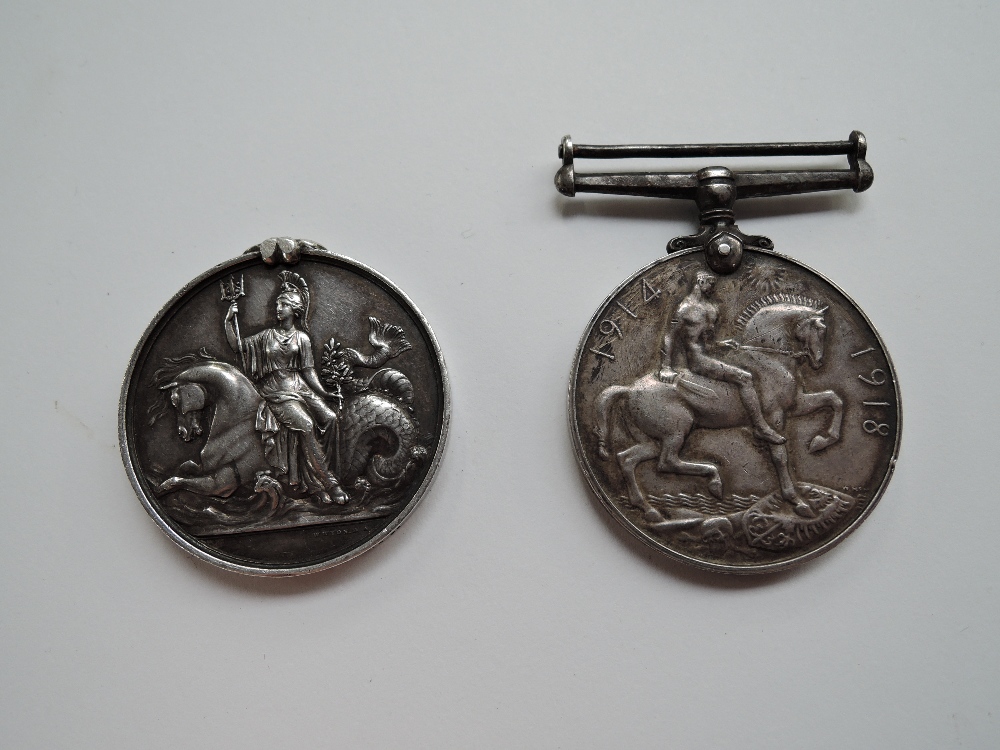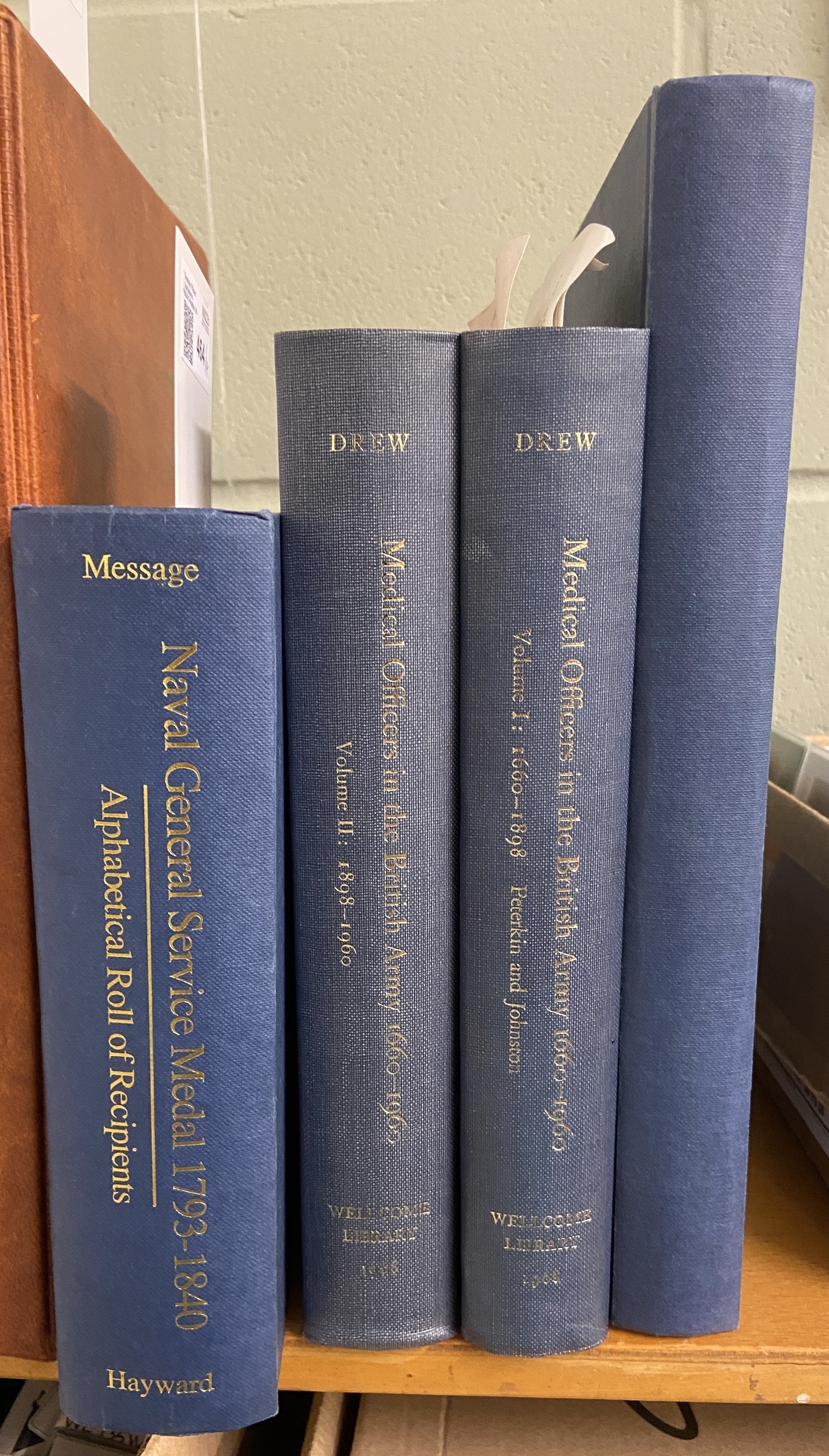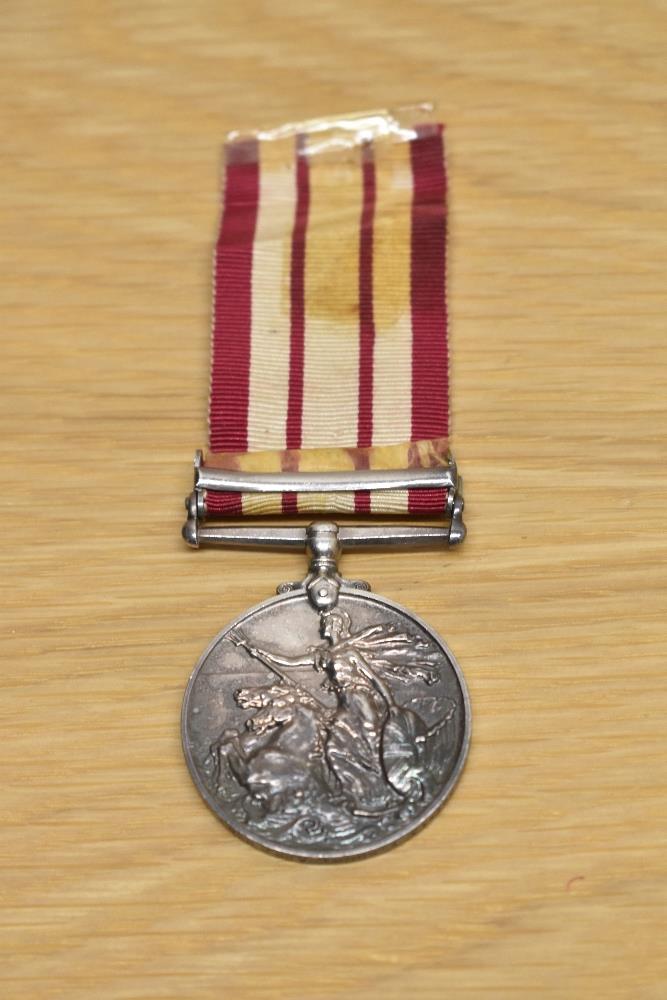NAVAL GENERAL SERVICE MEDAL, 1793-1840, single clasp, Copenhagen 1801 (John Lester.); officially impressed. Lightly toned, once cleaned and lightly polished with some associated hairline marks in fields, otherwise good very fine. ex Sotheby, 28th March 1966, lot 281, bought by Spink J B Hayward & Son, March 1973, lot 5, £95 Sotheby, Thursday 1st March, 1984, lot 149 Private John Lester, Royal Marines, first appears on the Muster roll for HMS Leydon in January 1801, and was sent aboard HMS Ardent (64) on the 2nd of February of that year, at ‘the Great Nore’ at Yarmouth, where she was being prepared to join the fleet for the expedition to Copenhagen. This expedition became necessary as a result of the signing of the League of Armed Neutrality between Denmark-Norway, Russia under Czar Paul I, and Sweden in supporting free trade with France. This was viewed as a direct threat not only to the British blockade of France, but also to the supply of key materials to the British Navy. The expedition to Copenhagen was led by Admiral Sir Hyde Parker, a solid but cautious figure at the age of 61, with the dynamic Vice-Admiral Horatio Nelson second in command (owing to his recent public scandal with Lady Hamilton). The aim was to dissolve the league by armed ultimatum, and failing that, of secondary importance was to nullify the Danish Fleet before it could combine with the Russian Fleet based in Kronstadt and Reval (Talinn) after the melt of Baltic sea-ice. The fleet made way on the 12th of March with some delay, allowing the Danes time to prepare for the British arrival, where stores and munitions could be made ready and the significant ‘Tre kroner’ shore batteries prepared. This, in addition to the moored Danish Fleet and the unknown waters off Copenhagen caused the British ships to carefully consider their attack. Attacking from the southern approach as directed by Nelson, at 8.00am on the morning of the 2nd of April 1801 the British vessels attempted a difficult route between various narrow channels and made the attack, however 3 ships ran aground in the approach. The Danish fought bravely and with impressive tenacity, causing heavy damage to the attacking ships, in particular Isis and Monarch. It was here at Copenhagen that Nelson; aboard HMS Elephant, famously ‘turned a blind eye’ to Parker’s signal to withdraw if required (arguably intended to spare Nelson potential embarrassment), however he continued to press on to victory and surrender of the Danish forces, which he himself considered his hardest-fought battle. The British suffered roughly 1,000 men killed or wounded, and the Danish figure estimated at twice that figure, as well as the destruction of the entire Danish Fleet save two frigates taken as prizes. Furthermore, this intervention caused the Danish withdrawal from the League, and the subsequent opening of negotiations with Sweden. Russia, following the death of Paul I soon after, also returned to peaceful terms with Britain. HMS Ardent, under the command of Captain Thomas Bertie, was part of Nelson’s Division in the attack, and was located towards the centre-rear of the British line. In the battle she found herself facing the Danish ships Kronborg (22), Svvardfisken (22) and Jylland (48), as well as several coastal guns, however despite suffering heavily she expended 2464 cartridges and 2693 shot, causing four Danish ships and floating batteries to surrender. The ship’s log noted her ‘masts, yards and rigging are much wounded’ and that they had ’30 men killed, 3 officers and 65 men wounded’ this figure including Private John Lester. HMS Ardent’s notable actions at Copenhagen brought Nelson aboard the Ardent the day following the battle, to deliver his personal commendations to his old friend Captain Bertie, as well as his officers and crew. Following the surrender of the Danish Forces, John Lester was transferred to the Danish prize vessel Holstein with many other wounded men of the British fleet, and returned to Yarmouth
NAVAL GENERAL SERVICE MEDAL, 1793-1840, single clasp, Copenhagen 1801 (John Lester.); officially impressed. Lightly toned, once cleaned and lightly polished with some associated hairline marks in fields, otherwise good very fine. ex Sotheby, 28th March 1966, lot 281, bought by Spink J B Hayward & Son, March 1973, lot 5, £95 Sotheby, Thursday 1st March, 1984, lot 149 Private John Lester, Royal Marines, first appears on the Muster roll for HMS Leydon in January 1801, and was sent aboard HMS Ardent (64) on the 2nd of February of that year, at ‘the Great Nore’ at Yarmouth, where she was being prepared to join the fleet for the expedition to Copenhagen. This expedition became necessary as a result of the signing of the League of Armed Neutrality between Denmark-Norway, Russia under Czar Paul I, and Sweden in supporting free trade with France. This was viewed as a direct threat not only to the British blockade of France, but also to the supply of key materials to the British Navy. The expedition to Copenhagen was led by Admiral Sir Hyde Parker, a solid but cautious figure at the age of 61, with the dynamic Vice-Admiral Horatio Nelson second in command (owing to his recent public scandal with Lady Hamilton). The aim was to dissolve the league by armed ultimatum, and failing that, of secondary importance was to nullify the Danish Fleet before it could combine with the Russian Fleet based in Kronstadt and Reval (Talinn) after the melt of Baltic sea-ice. The fleet made way on the 12th of March with some delay, allowing the Danes time to prepare for the British arrival, where stores and munitions could be made ready and the significant ‘Tre kroner’ shore batteries prepared. This, in addition to the moored Danish Fleet and the unknown waters off Copenhagen caused the British ships to carefully consider their attack. Attacking from the southern approach as directed by Nelson, at 8.00am on the morning of the 2nd of April 1801 the British vessels attempted a difficult route between various narrow channels and made the attack, however 3 ships ran aground in the approach. The Danish fought bravely and with impressive tenacity, causing heavy damage to the attacking ships, in particular Isis and Monarch. It was here at Copenhagen that Nelson; aboard HMS Elephant, famously ‘turned a blind eye’ to Parker’s signal to withdraw if required (arguably intended to spare Nelson potential embarrassment), however he continued to press on to victory and surrender of the Danish forces, which he himself considered his hardest-fought battle. The British suffered roughly 1,000 men killed or wounded, and the Danish figure estimated at twice that figure, as well as the destruction of the entire Danish Fleet save two frigates taken as prizes. Furthermore, this intervention caused the Danish withdrawal from the League, and the subsequent opening of negotiations with Sweden. Russia, following the death of Paul I soon after, also returned to peaceful terms with Britain. HMS Ardent, under the command of Captain Thomas Bertie, was part of Nelson’s Division in the attack, and was located towards the centre-rear of the British line. In the battle she found herself facing the Danish ships Kronborg (22), Svvardfisken (22) and Jylland (48), as well as several coastal guns, however despite suffering heavily she expended 2464 cartridges and 2693 shot, causing four Danish ships and floating batteries to surrender. The ship’s log noted her ‘masts, yards and rigging are much wounded’ and that they had ’30 men killed, 3 officers and 65 men wounded’ this figure including Private John Lester. HMS Ardent’s notable actions at Copenhagen brought Nelson aboard the Ardent the day following the battle, to deliver his personal commendations to his old friend Captain Bertie, as well as his officers and crew. Following the surrender of the Danish Forces, John Lester was transferred to the Danish prize vessel Holstein with many other wounded men of the British fleet, and returned to Yarmouth















Testen Sie LotSearch und seine Premium-Features 7 Tage - ohne Kosten!
Lassen Sie sich automatisch über neue Objekte in kommenden Auktionen benachrichtigen.
Suchauftrag anlegen